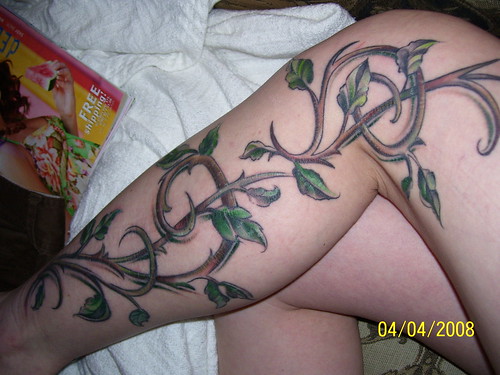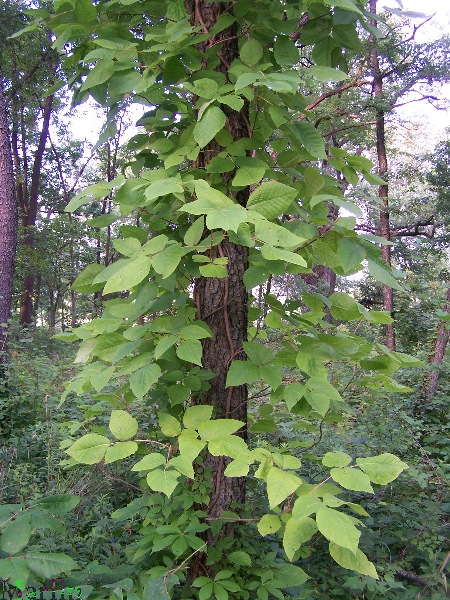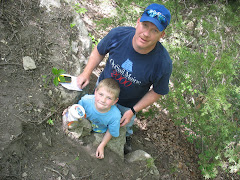Poison Ivy, a plant native to North America. It grows along fences, in dry fields, and in open woodlands. Common poison ivy is found throughout the United States. It is a climbing or trailing vine or upright shrub. It has alternate, compound leaves. Each leaf is composed of three dark-green leaflets 3 to 10 inches (8 to 25 cm) long. The leaflets are toothed or lobed and have pointed tips; they are usually glossy. The common poison ivy has yellowish-green flowers and greenish-white berries.Poison ivy is composed of three dark-green leaflets.
The plant contains urushiol, an oily substance that is an allergen to most humans. It causes severe inflammation of the skin. Urushiol is present in all parts of the plant, especially the sap, which is most abundant in spring and summer. The poison is spread by contact with the plant or contaminated objects. It is also spread by burning the plant, heat vaporizes the oil, which is then carried in the smoke. Urushiol on clothing, shoes, garden tools, and other objects can remain active for a year or longer.
Symptoms usually appear 24 to 48 hours after contact, but may take 7 to 10 days to develop. The skin develops a red, blistering rash that itches intensely. After about 5 days, the blisters break and become crusty. The skin usually heals within two weeks. The rash is treated with cortisone lotion or cream. Calamine lotion relieves the itching and inflammation and dries up the blisters. In severe reactions, oral doses of antihistamine, benzocaine, and corticosteroid drugs may be prescribed.
Poison ivy plants are killed by spraying with ammonium sulfamate or the herbicide 2, 4-D.
Common poison ivy is Rhus radicans of the cashew, or sumac, family, Anacardiaceae. (science.howstuffworks.com/flowering-plants/po...)
Let me tell you, a poison ivy rash is HORRIBLE! (This picture is NOT me, by the way...nor is it Jacob, who also had a touch of the terrible rash! Instead it is some poor man that I found while searching for images of poison ivy. He looks rather uncomfortable and appears to be saying, "Oh #%$*&@! Look what happened to my arms!) My patches were a little smaller than this poor man's. I had a 4 inch x 5 inch patch on my left shin, a 3 inch by 2 inch patch behind my left knee (now that was bad) and a few smaller patches on my right leg along with small blisters here and there.
I ended up going to the doctor three times. Jacob was lucky since he only had to go once. Both of us were started on steroids. Jacob's luckily cleared up. My luck wasn't so good. I ended up back at the clinic within a week getting a shot in the butt. That still didn't do the trick...the large patch on my shin got infected and I ended up taking more steroids and antibiotics. Of course, with my luck, I was ALLERGIC to the antibiotic and got ANOTHER rash (mind you, I still had the poison ivy rash!) So yet another antibiotic was prescribed. Finally, it cleared up.
The next time I go geocaching in the woods, this is what I'm taking with me.
Jeff has been teasing me and calling me Poison Ivy, from the Batman comics. I think I'll get a tattoo to always remind me of how much I enjoyed my oozy, itchy, scratchy ordeal.












